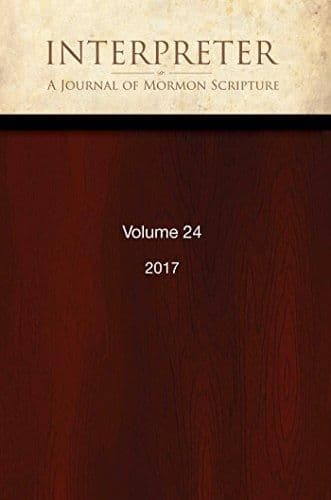Journal
Seers and Stones: The Translation of the Book of Mormon as Divine Visions of an Old-Time Seer

Title
Seers and Stones: The Translation of the Book of Mormon as Divine Visions of an Old-Time Seer
Publication Type
Journal Article
Year of Publication
2017
Authors
Spencer, Stan (Primary)
Journal
Interpreter: A Journal of Latter-day Saint Faith and Scholarship
Pagination
27-98
Volume
24
Abstract
Joseph Smith used the term the Urim and Thummim to refer to the pair of seer stones, or “interpreters,” he obtained for translating the Book of Mormon as well as to other seer stones he used in a similar manner. According to witness accounts, he would put the stone(s) in a hat and pull the hat close around his face to exclude the light, and then he would see the translated text of the Book of Mormon. By what property or principle these stones enabled Joseph Smith to see the translated text has long been a matter of conjecture among Mormons, but the stones have commonly been understood as divinely powered devices analogous to the latest human communications technology. An alternative view, presented here, is that the stones had no technological function but simply served as aids to faith. In this view, the stones did not themselves translate or display text. They simply inspired the faith Joseph Smith needed to see imaginative visions, and in those visions, he saw the text of the Book of Mormon, just as Lehi and other ancient seers saw sacred texts in vision. Although Joseph Smith also saw visions without the use of stones, the logistics of dictating a book required the ability to see the translated text at will, and that was what the faith-eliciting stones would have made possible.
Subject Keywords
Bibliographic Citation
Terms of use
Items in the BMC Archive are made publicly available for non-commercial, private use. Inclusion within the BMC Archive does not imply endorsement. Items do not represent the official views of The Church of Jesus Christ of Latter-day Saints or of Book of Mormon Central.